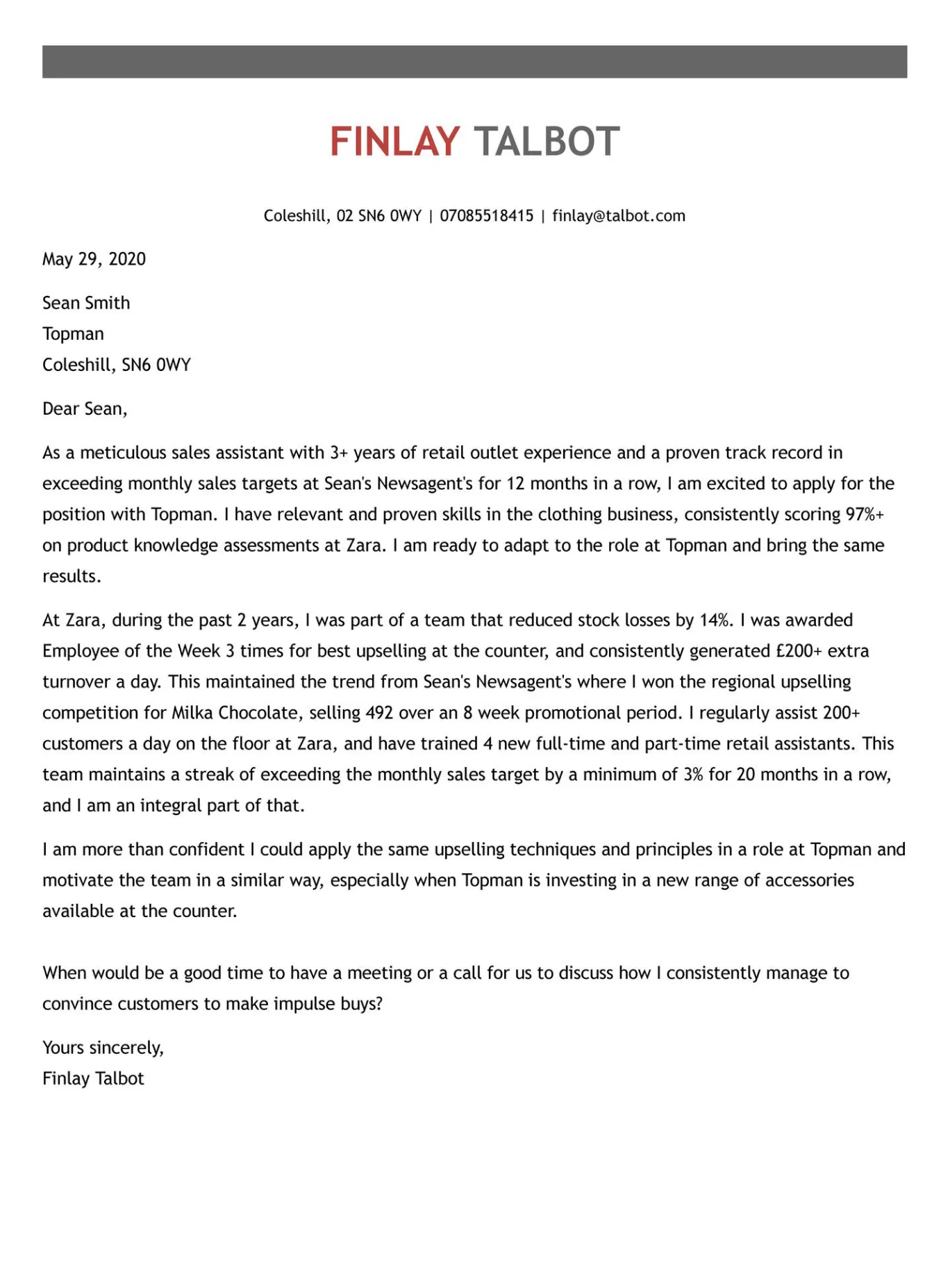What is a Cover Letter
A cover letter is a crucial document that accompanies your resume when applying for a job. It serves as your initial introduction to a potential employer, offering an opportunity to showcase your personality, express your interest in the role, and highlight the specific skills and experiences that make you a strong candidate. It’s more than just a formality; it’s your chance to make a lasting first impression and set yourself apart from other applicants. A well-crafted cover letter can significantly increase your chances of securing an interview, making it an essential part of any job application strategy.
The Purpose of a Cover Letter
The primary purpose of a cover letter is to provide context to your resume. While your resume presents a factual account of your professional history, a cover letter allows you to explain why you’re interested in the specific position and company, and how your skills and experiences align with their needs. It’s an opportunity to tell your story, demonstrating your enthusiasm and passion for the role. This is also a chance to address any potential gaps in your resume or explain unusual career moves. A well-written cover letter can make you stand out by creating a more personalized application that captures the attention of the hiring manager.
Cover Letter vs. Resume

A resume is a concise summary of your skills, experience, and education. It presents a brief overview of your qualifications, usually in a bulleted or easily scannable format. The cover letter, on the other hand, is a more narrative document. It offers you the chance to expand on the information in your resume, providing greater detail and context. While the resume focuses on what you’ve done, the cover letter explains why you’re a good fit for this specific job and why you’re genuinely interested in the opportunity. Your resume gives the facts, and your cover letter helps to tell the story behind those facts, creating a more complete picture of you as a candidate.
Step 1 Research the Company
Before you even begin writing, thorough research is paramount. Understanding the company’s mission, values, and recent activities is essential. This shows the employer that you are genuinely interested in their organization and haven’t just sent out a generic application. Researching the company also allows you to tailor your cover letter to their specific needs and demonstrate how your skills align with their goals. This targeted approach significantly increases your chances of grabbing the hiring manager’s attention, as it shows you’ve taken the time to understand their business and culture, setting you apart from candidates who may not have done their homework.
Why Company Research Matters
Researching the company offers several advantages. Firstly, it demonstrates initiative and genuine interest. Hiring managers can immediately tell whether you’ve taken the time to learn about their organization. Secondly, it helps you tailor your cover letter to the company’s specific needs. You can highlight the skills and experiences that align with their values and objectives. Thirdly, it allows you to address specific challenges the company might be facing or mention recent achievements, showing that you’re informed and engaged. Finally, it enables you to personalize your application, making a more compelling case for why you’re the right fit for the role.
How to Research a Company
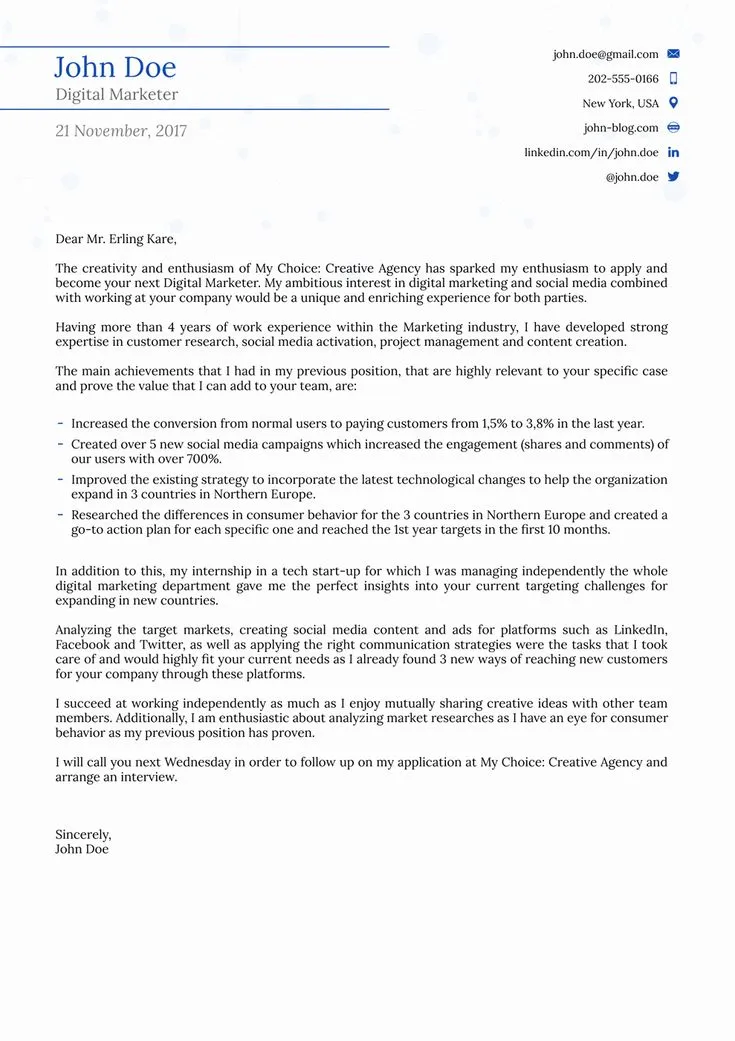
Start with the company’s website. Explore the ‘About Us’ section, read the mission statement, and browse recent news and blog posts. LinkedIn is a valuable resource; study the company page and look at profiles of current employees. This will give you insights into the company culture and what they value. Check out the company’s social media presence on platforms like Twitter, Facebook, and Instagram. Reviewing these channels can provide a sense of the company’s voice and personality. Use Google News to search for recent press releases or articles about the company. Lastly, if possible, network with people who work at the company to gain insider perspectives.
Step 2 Format Your Cover Letter
Formatting your cover letter correctly is crucial for readability and professionalism. A well-formatted letter is easy to scan and demonstrates attention to detail. Keep it concise, usually no more than one page, and use a standard font like Times New Roman, Arial, or Calibri, with a font size between 10 and 12 points. Use single spacing within paragraphs and double spacing between paragraphs. Ensure clear margins (1 inch on all sides) and align the text to the left. This helps the reader quickly grasp the information. Choose a clean, professional look that reflects your style and professionalism.
Header and Contact Information
Start with your contact information at the top. Include your name, address, phone number, and email address. If applicable, add a link to your professional LinkedIn profile or online portfolio. Beneath your contact information, add the date, and then the hiring manager’s name, title, and the company’s address. If you can’t find the hiring manager’s name, address the letter to the hiring team or the appropriate department. This attention to detail shows that you are thorough and professional, making a positive first impression from the start.
Salutation
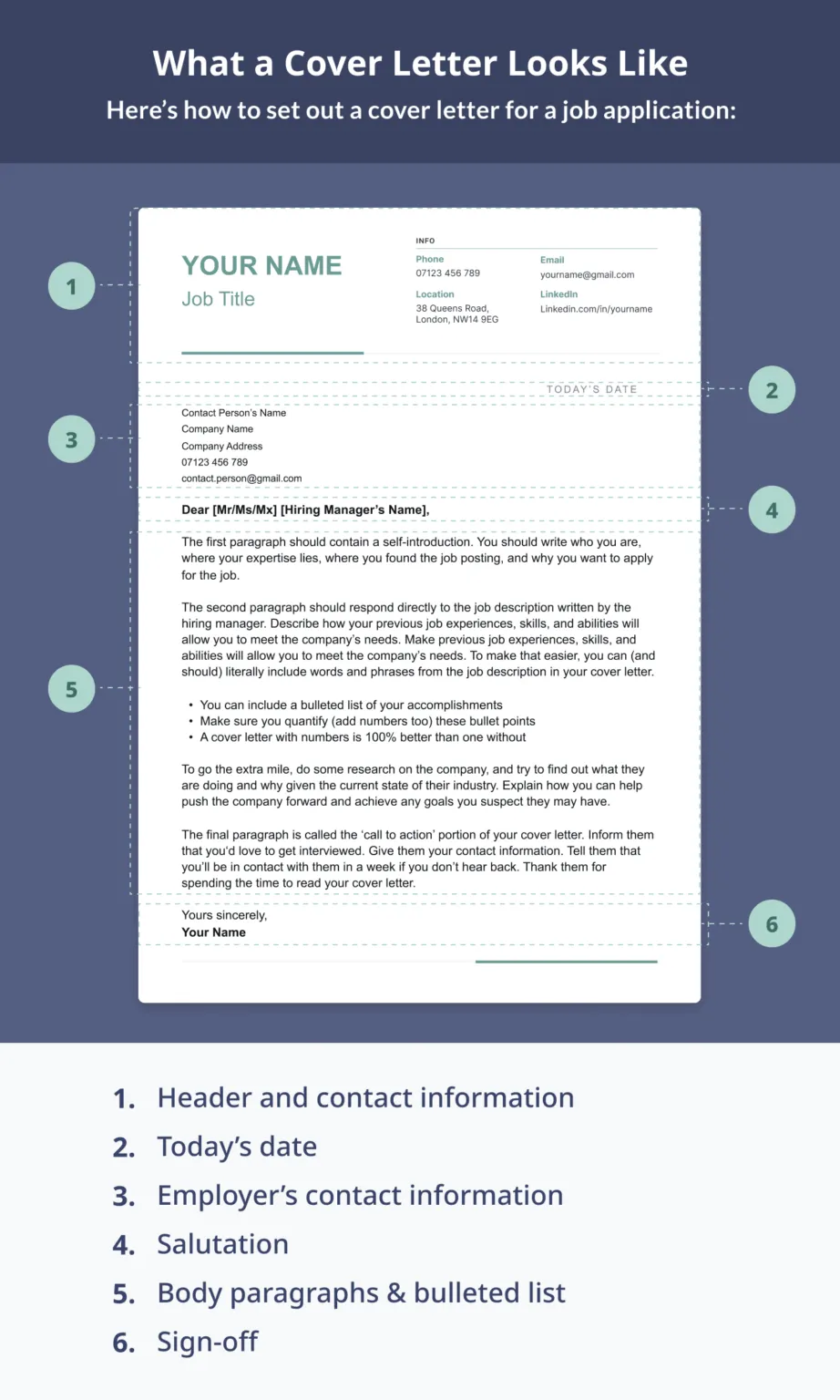
The salutation sets the tone for your letter. Always try to address the hiring manager by name. If you know their name, use ‘Dear Mr./Ms./Mx. [Last Name]’. This personalization shows that you’ve done your research. If you cannot find a specific name, use a general greeting. Alternatives include ‘Dear Hiring Manager,’ or ‘Dear [Department Name] Team’. Avoid generic greetings like ‘To Whom It May Concern,’ as they make your letter seem impersonal. Using the right salutation sets a positive and professional tone from the start.
Step 3 Write a Compelling Opening
The opening paragraph is your first chance to capture the reader’s attention. It should be concise and engaging, immediately establishing your purpose for writing. Avoid generic openings; instead, tailor your introduction to the specific role and company. A strong opening grabs the hiring manager’s interest and motivates them to read further. The goal is to make them eager to learn more about you. Your opening statement will set the tone for the rest of the letter, so make sure it’s a good one.
Grab the Reader’s Attention
Start with a strong, attention-grabbing sentence. You might mention a recent accomplishment, reference a mutual connection, or express excitement about the opportunity. Tailor this to the specific role and company. Show that you’ve done your research and have a genuine interest. Briefly state where you saw the job posting and why you’re excited about the position. Be direct and enthusiastic. An effective opening makes the hiring manager want to continue reading, so it’s important to get their attention from the first sentence.
State Your Purpose
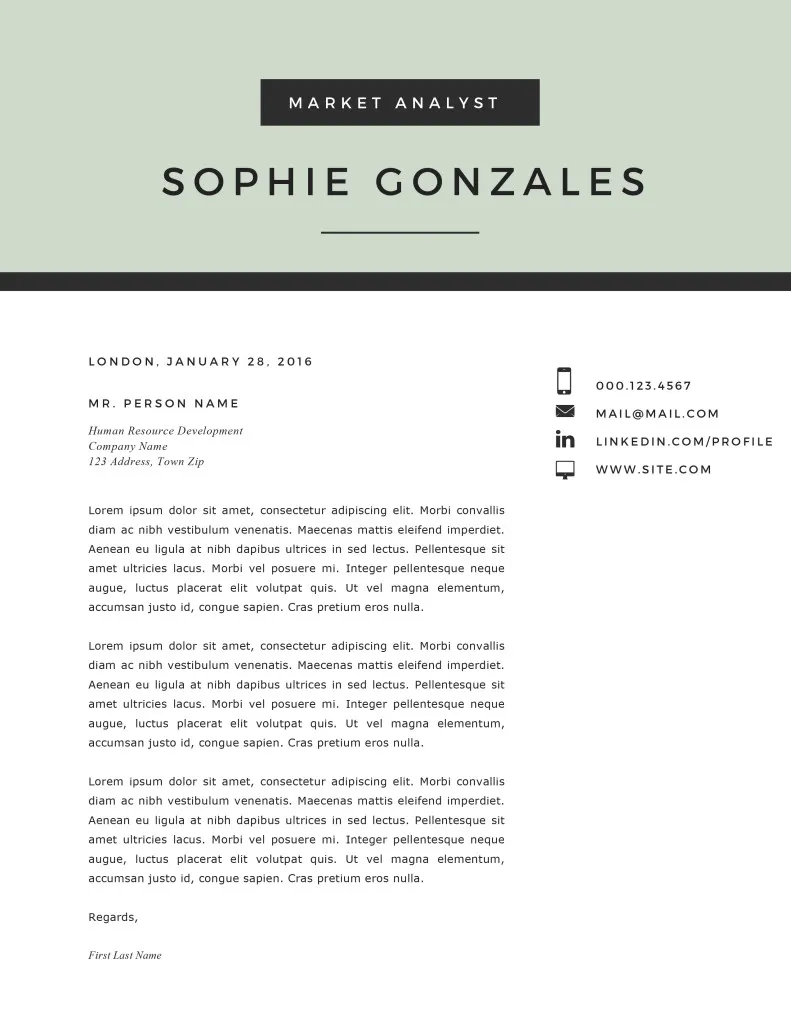
Clearly state the position you are applying for. This ensures that the reader immediately understands why you’re writing. Briefly mention how you discovered the job and express your enthusiasm for the role. In one or two sentences, explain why you believe you are a good fit for the position. Reference specific aspects of the job description that appeal to you. This clarity sets the stage for the rest of your letter, making it easy for the reader to follow your narrative. Make sure it aligns with the job requirements and show your understanding of the role.
Step 4 Highlight Your Skills and Experience
This section is where you demonstrate how your skills and experience align with the job requirements. Select a few key skills or experiences that are most relevant to the role and provide specific examples. Use the STAR method (Situation, Task, Action, Result) to provide context and quantify your achievements. Use strong action verbs and focus on what you accomplished. This is where you showcase your value to the employer. Tailor this section to match the job description, ensuring that you emphasize the qualifications and skills that the company values most.
Show, Don’t Tell
Instead of simply listing skills, demonstrate them with specific examples from your past experiences. Use the STAR method (Situation, Task, Action, Result) to provide context. Describe the situation you were in, the task you had to accomplish, the actions you took, and the results you achieved. For example, instead of saying ‘I am a good communicator,’ you might say ‘In my previous role, I led a team of five in a customer service project, resulting in a 15% increase in customer satisfaction scores.’ This approach is more impactful and gives concrete evidence of your abilities.
Quantify Your Achievements
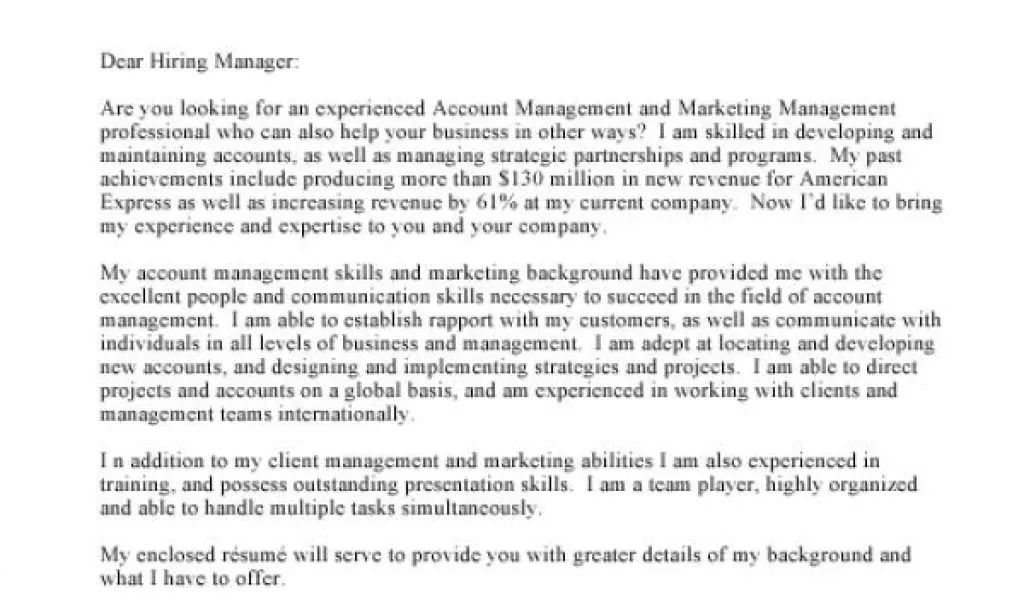
Whenever possible, quantify your achievements to demonstrate the impact you’ve made in previous roles. Use numbers, percentages, and metrics to showcase your accomplishments. For example, instead of saying ‘Improved sales,’ say ‘Increased sales by 20% within six months.’ This is the best way to show your value, as you provide concrete evidence of your skills and experience. Highlighting your achievements with measurable results gives the hiring manager a clear picture of your capabilities and the value you can bring to their organization.
Step 5 Show Enthusiasm and Fit
Demonstrate your enthusiasm for the company and the role. Show how your career goals align with the company’s mission and values. Convey your understanding of the company’s needs and how you can contribute. Connect your skills and experiences to the specific requirements outlined in the job description. This is where you show the hiring manager that you are not just qualified, but also genuinely excited about the opportunity. Your enthusiasm should be evident throughout this section, reinforcing your suitability for the role.
Demonstrate Your Understanding
Demonstrate your understanding of the company’s mission, values, and recent activities. Reference specific company projects or initiatives that resonate with you. Show that you’ve researched the company and know what they do. Explain how your skills align with the company’s objectives and what you can bring to the table. Understanding the company and the job is key. Mention any relevant industry trends or insights. This shows your ability to be knowledgeable about the field, indicating that you are well-prepared for the role.
Connect Your Skills to the Role
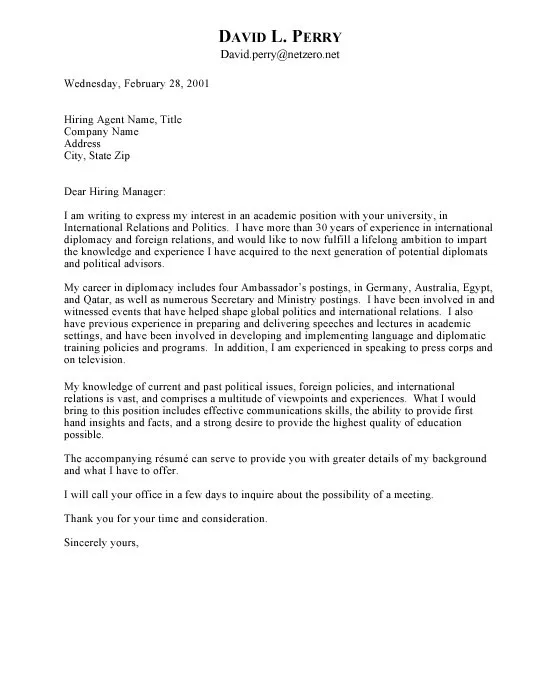
Carefully review the job description and identify the key skills and qualifications the employer is seeking. Connect your skills and experiences directly to these requirements. Explain how your abilities match the specific needs of the role. Provide concrete examples of your previous accomplishments that demonstrate these skills. Show, don’t just tell, how you have used these skills in the past. This direct connection between your skills and the job requirements is essential for proving that you are a good fit for the position. Tailor your letter to the specific role and demonstrate your clear understanding of the job requirements.
Step 6 Write a Strong Closing
Your closing paragraph is the final opportunity to leave a positive impression. It should reiterate your interest in the role and express your enthusiasm for the opportunity. Keep it concise and professional, and always include a call to action. This is where you emphasize your eagerness to move forward in the hiring process. A strong closing leaves the reader with a clear idea of what you want, encouraging them to contact you.
Reiterate Your Interest
Reiterate your strong interest in the position and the company. Summarize why you are the ideal candidate and what you can bring to the role. Briefly restate your enthusiasm, and reinforce your suitability. This shows that you are not just qualified but also passionate about the opportunity, leaving a lasting, positive impression. Reaffirming your interest underscores your commitment to the job.
Call to Action
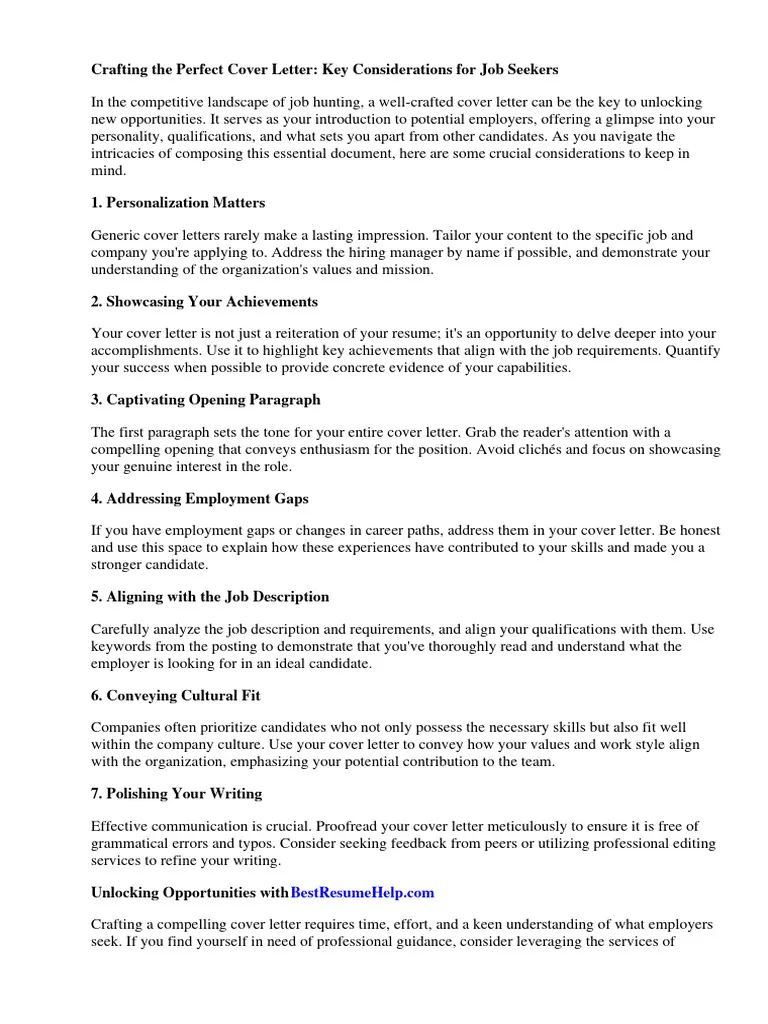
Always include a call to action. State your availability for an interview and provide your contact information again. Let the hiring manager know how they can reach you and express your eagerness to discuss your qualifications further. Ensure that you are accessible and encourage the hiring manager to contact you, making it easy for them to take the next step. End with a professional closing, such as ‘Sincerely’ or ‘Best regards’, followed by your name.
Step 7 Proofread and Edit
Before sending your cover letter, proofread it carefully for any errors. A polished cover letter demonstrates your attention to detail and professionalism. Take your time to review every word, and then ask someone else to proofread it for you. Even minor errors can undermine your credibility. Ensuring that your letter is free of mistakes is crucial to making a positive first impression and showing that you value accuracy and attention to detail.
Check for Errors
Thoroughly check your cover letter for grammatical errors, spelling mistakes, and typos. Ensure that the formatting is consistent throughout. Verify the accuracy of the contact information for both you and the hiring manager. Double-check all the facts and figures you have included. Carefully proofread your work, looking for any mistakes, and be meticulous in this process. A polished letter is essential for making a positive impression. Use online grammar checkers and spelling tools to help you catch errors that you might miss.
Get Feedback
Ask a trusted friend, colleague, or career counselor to review your cover letter. A fresh pair of eyes can spot errors and provide valuable feedback on clarity, tone, and overall effectiveness. Their feedback can help you identify areas for improvement and ensure that your cover letter effectively communicates your skills and experiences. Consider asking for feedback on the overall structure, writing style, and the strength of your arguments. A second opinion can often provide a much-needed perspective, giving you more confidence.
